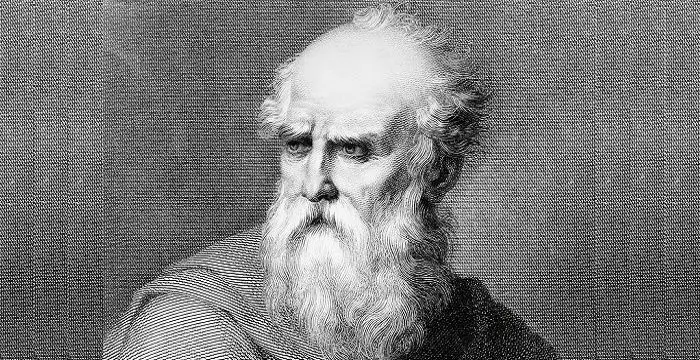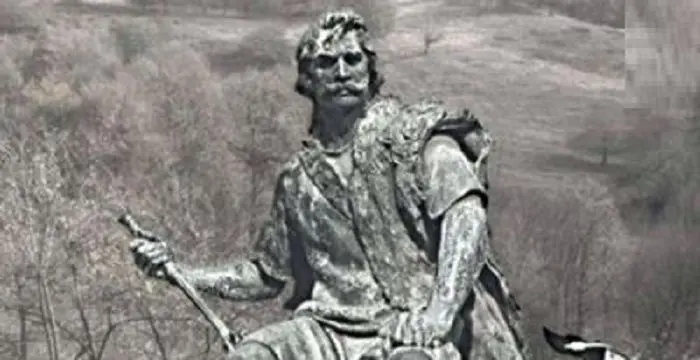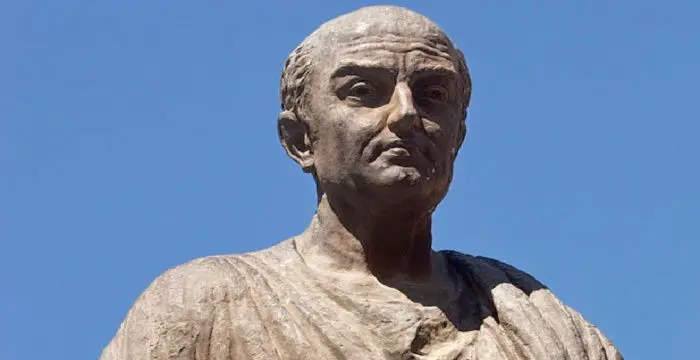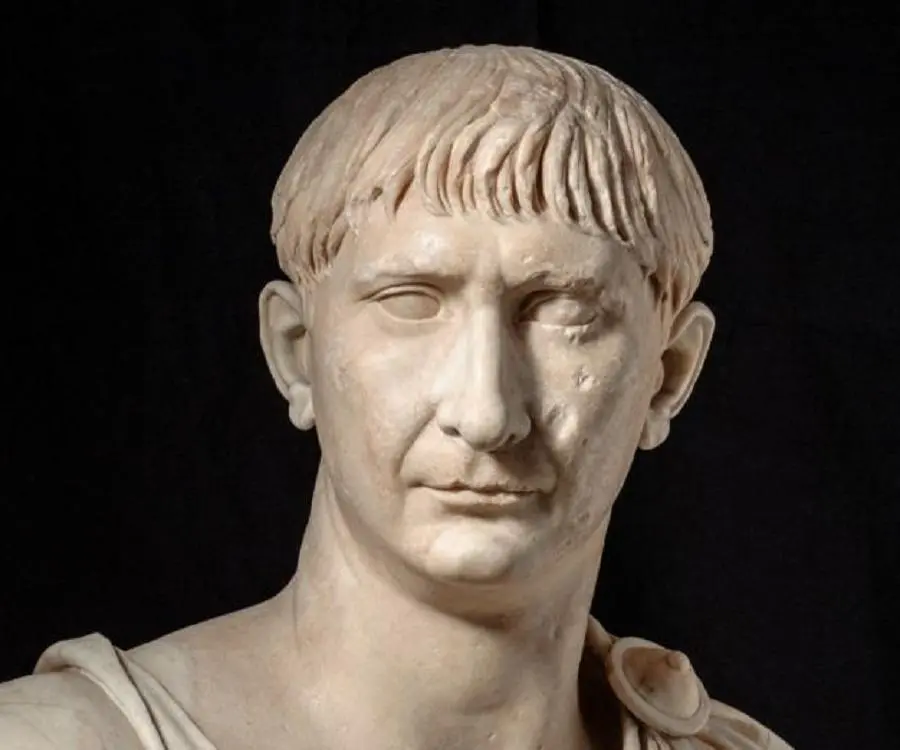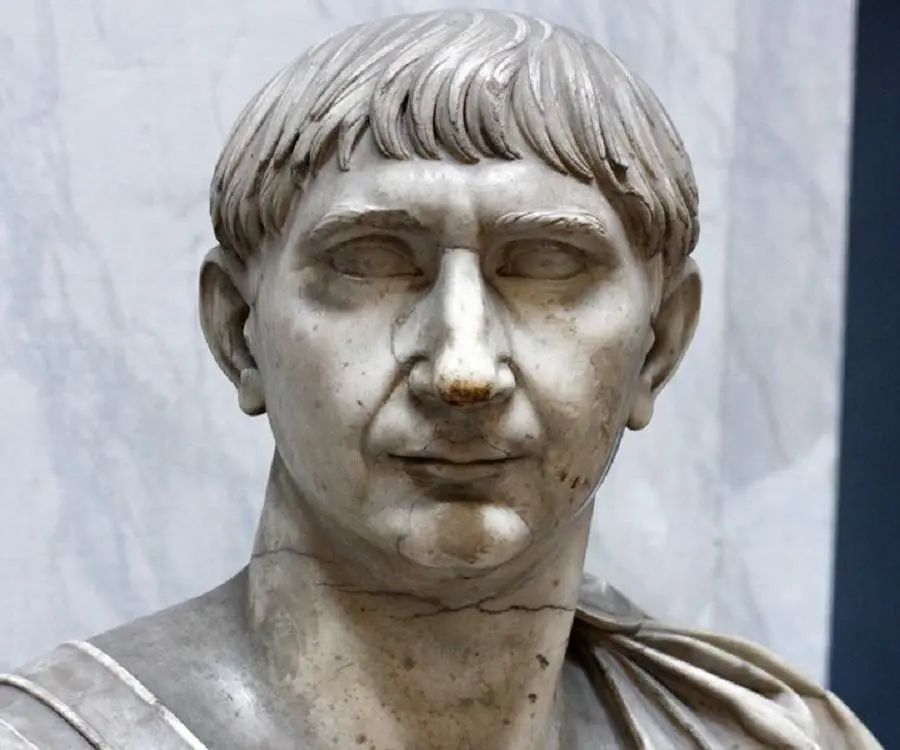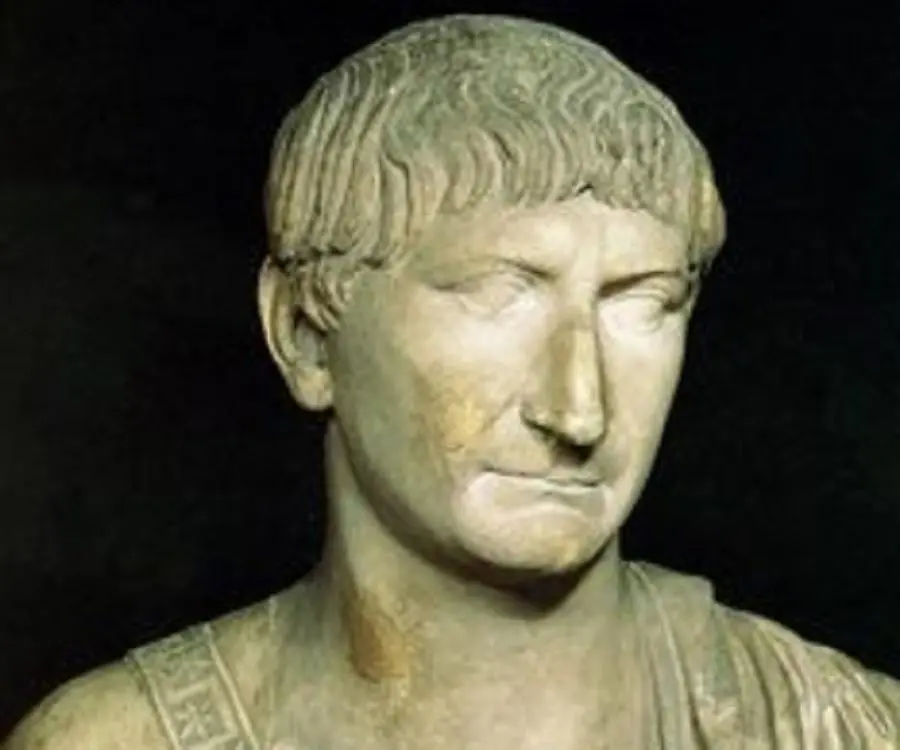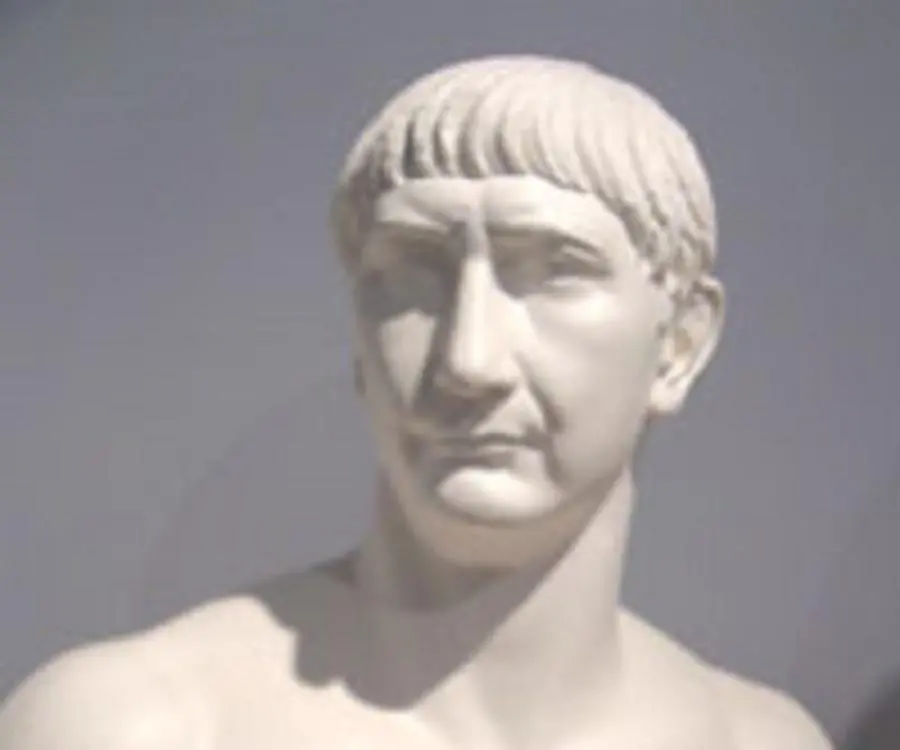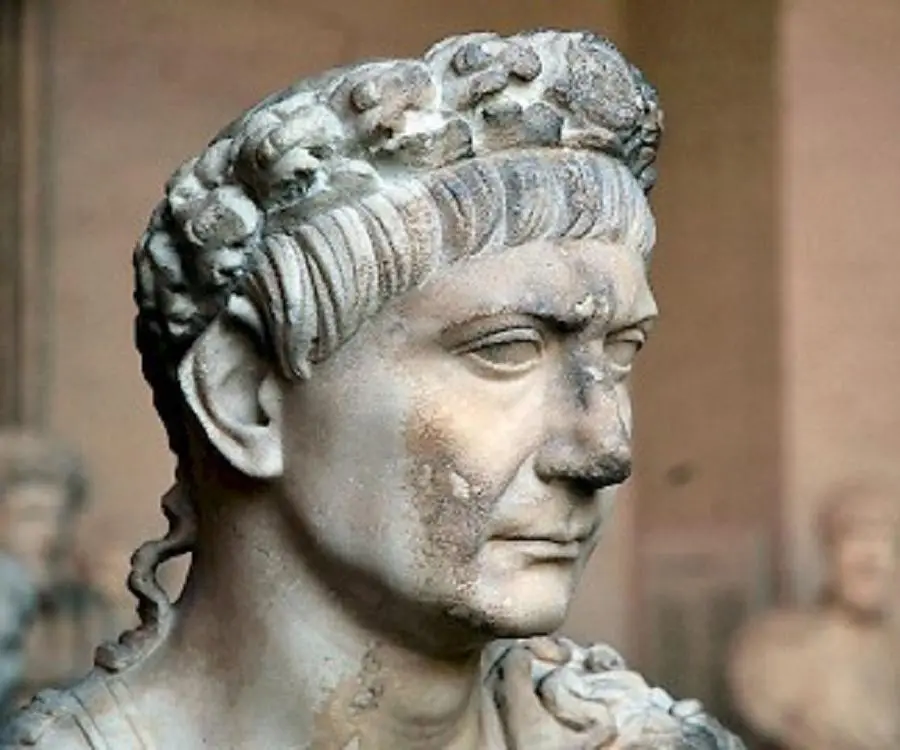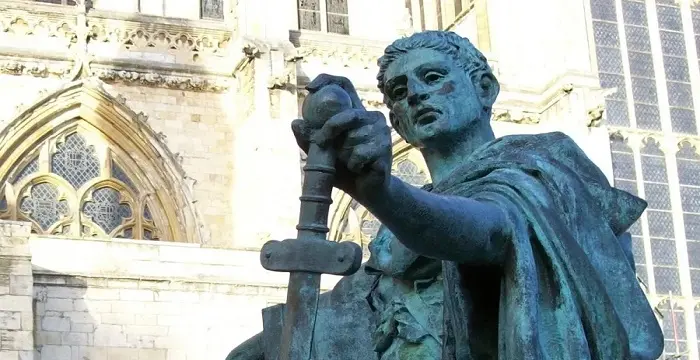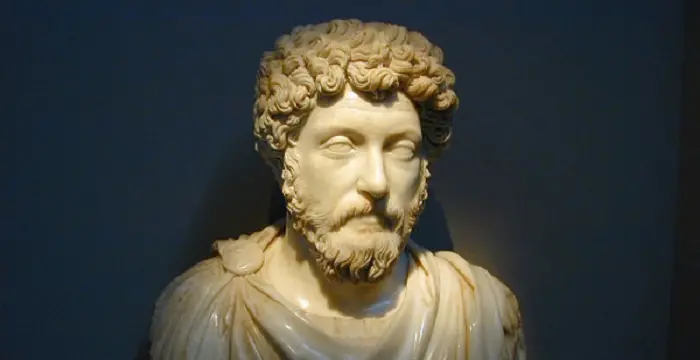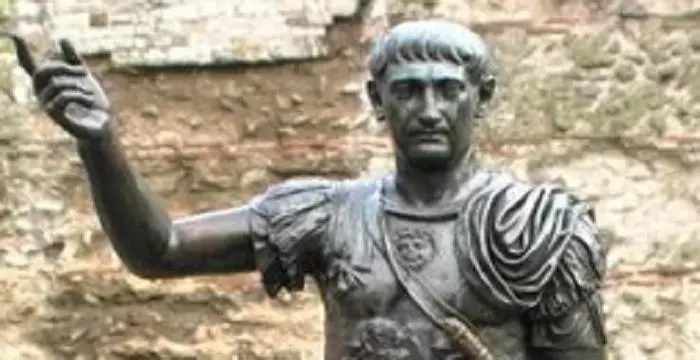
Trajan - Roman Emperor, Family and Family
Trajan's Personal Details
Trajan was a Roman ruler who was known for his exceptional military abilities and his philanthropic work
| Information | Detail |
|---|---|
| Birthday | September 18, 1953 |
| Died on | August 8, 117 |
| Nationality | Ancient Roman |
| Famous | Historical Personalities, Emperors & Kings, Ancient Roman Men, Emperors, Kings, Roman Emperor |
| Spouses | Pompeia Plotina |
| Known as | Imperator Caesar Nerva Traianus Divi Nerva fili Augustus |
| Childrens | Publius Aelius Hadrianus |
| Birth Place | Hispania Baetica |
| Gender | Male |
| Father | Marcus Ulpius Trajanus |
| Mother | Marcia |
| Sun Sign | Virgo |
| Born in | Hispania Baetica |
| Famous as | Roman Emperor |
| Died at Age | 63 |
// Famous Ancient Roman Men
Vitruvius
Vitruvius was a Roman architect, author, and military engineer during the 1st century BC. Check out this biography to know about his childhood, family life, achievements and fun facts about his life.
Flavius Odoacer
Flavius Odoacer was a soldier who went on to become the King of Italy. This biography profiles his childhood, family, life history, and timeline.
Lucius Annaeus Seneca
Lucius Annaeus Seneca, commonly known as Seneca, was a Roman philosopher and statesman. This biography profiles his childhood, life, career, works, achievements & timeline.
Trajan's photo
Who is Trajan?
Trajan was a Roman ruler who was known for his exceptional military abilities and his philanthropic work during his reign from 98 AD to 117 AD. He was honored with the title of “Optimus Princeps,” or “the best ruler,” by the Senate. He was born in Italica, Spain, to a nobleman father. Marcus Cocceius Nerva ruled the vast empire in 96 AD. However, he was highly unpopular with the common public and the court officials. Without any child to succeed him, he was compelled to choose Trajan as his successor. When Trajan ascended the throne, the kingdom prospered with the construction of several establishments that proved to be a boon for the common public. Moreover, his military campaigns contributed to his celebrity status. He conquered the Dacians and launched three military invasions. Thus, under his reign, the Roman Empire reached its peak. Trajan performed many other social and political reforms that made him popular in his rival kingdoms, too. After a successful reign that lasted for 19 years, Trajan died due to an unknown illness. His adopted son, Hadrian, succeeded him.
// Famous Roman Emperor
Commodus
Commodus (Lucius Aurelius Commodus) was a Roman emperor during the early years of the first millennium. This biography provides detailed information about his childhood, family, rule, life history, achievements, death etc.
Constantine the Great
Constantine the Great was a Roman Emperor of Illyrian ancestry who ruled from 306 to 337 AD. This biography of Constantine the Great provides detailed information about his childhood, life, achievements, works & timeline
Marcus Aurelius
Marcus Aurelius was one of the most cherished Roman emperors in history. Go through this article to learn more about his profile, childhood, life and timeline.
Childhood & Early Life
Trajan was born Marcus Ulpius Traianus, on September 18, 53 AD. His birthplace, Hispania Baetica, is part of present-day Spain. He was the first Roman emperor who was born outside Italy. He belonged to a well-respected noble family in the province of Hispania.
Trajan’s mother, Marcia, was a Roman noblewoman and the sister-in-law of Roman Emperor Titus. Trajan's father was the governor of Syria.
Trajan started his military training very early in life. As a teenager, he worked in the army under his father’s command. Roman Emperor Domitian, who was known to be ruthless otherwise, was nice to Trajan, as he understood his abilities.
In 89 AD, Trajan marched to Rhine to help Domitian fight against the rebel German governor, Saturninus. Although the battle was won even before Trajan arrived on the battleground, Domitian still decided to honor him. He was bestowed with the honor of praetor in 85 AD and with the honor of consul in 91 AD.
Rise to Power
In 96 AD, Domitian was assassinated and Nerva took his place as the ruler of the Roman Empire. Nerva, who was otherwise known as a very weak ruler, acted smartly and made Trajan the governor of Northern Germany. It was a well-calculated move by Nerva, as it earned him the respect of the military that consisted of blind supporters of Trajan.
Nerva was still childless in 97 AD, and many people in the royal court began urging him to choose his successor as soon as possible. Trajan was in Germany when he received a letter from Nerva. In the letter, Nerva had asked him to be his adopted son. Trajan was busy handling some mutinies at that time, and he did not directly travel to Rome. He decided to complete the remaining work in Germany first.
Nerva died in 98 AD, and as he had named Trajan his successor, Trajan was called back to Rome. However, before moving back, Trajan made sure that Garcia was secure from all mutinies and that his allies were still on his side. He entered Rome on foot in 99 AD and was welcomed in a grand way by both civilians and senators.
Emperor
After becoming the ruler, Trajan chose his right-hand men very carefully. One of them was Pliny the Younger, who acted as his lawyer and author and also served as the governor of Bithynia. He corresponded with Trajan on almost every issue, and they gave way to the arrival of a golden era in the Roman Empire.
Despite the massive respect he got from the Senate, he was far from earning the tag of an absolute ruler that Domitian and Nerva had earned. Despite that, Trajan continued to prove himself to be a better ruler by introducing several new reforms in the society. He ordered the construction of several roads, public baths, and new bridges. He also eased business processes for Rome by building a modern port in Ostia.
Many people felt he followed in the footsteps of Domitian. He freed many prisoners and called back the exiles. This earned him a lot of respect, and his kingdom prospered. Historians often mention him as a thoughtful ruler. However, Trajan’s true passion was war.
Throughout his reign that lasted 19 years, Trajan was involved in several wars. Three of the most widely talked-about wars were the two wars with the Dacians and one at the eastern frontier.
His first battle after becoming the emperor was against the Dacian ruler Decebalus in 101 AD. Trajan and Decebalus had a stiff relationship since the time of Domitian. After finding the right opportunity, Trajan attacked Decebalus and defeated him in the Second Battle of Tapae. Decebalus assured peace, but he was not known as a man of his words. After he broke the peace agreement, he was once again attacked by Trajan.
Decebalus suffered a bad defeat in 105 AD, and following this, he committed suicide. His severed head was displayed to the public. Dacia thus became a part of the Roman Empire. In order to diminish chances of future revolts, half of the population of Dacia was made to flee and was replaced by Roman colonists.
Trajan returned to Rome after attaining this major victory, and as part of the celebration, he organized a series of grand gladiator matches that involved over ten thousand gladiators and caused the slaughter of about eleven thousand animals.
Under his reign, his kingdom was peaceful for the next few years. However, there were issues that required Trajan’s direct attention. One such trouble was brewing in Armenia, a buffer state of the Roman Empire. The Parthians ignored the Romans and gave the throne to one of their own.
Infuriated by this treasonous act, Trajan embarked on a military campaign to Armenia and quickly showed the Parthians their place by making Armenia a Roman province yet again. Trajan did not return to Rome after that. Instead, he headed east with his army and conquered Mesopotamia on the way. Soon, the Roman Empire had grown larger than ever, stretching from Scotland to the Caspian Sea.
However, the Mesopotamians retaliated. Their attack was strong, and Trajan had no other option but to retreat to Armenia. During the battle, Trajan almost lost his life. One of his bodyguards got killed while saving him.
Death & Legacy
In 117 AD, the Jewish people revolted, and the revolution spread to Egypt and Cyprus. Soon, the revolt reached the northern frontiers and Trajan was made to retreat to Rome. However, he never made it back. During his trip back, he fell seriously ill and died on August 9, 117 AD. His body was taken back to Rome, and his cremation took place as per Roman rituals. His body was cremated and was buried at ‘Trajan’s Column.’
Trajan was known as a righteous ruler and a noble man. Centuries have passed and historians have still not found any evidence that suggests he had committed any evil deed.
Personal Life
Trajan married Pompeia Plotina, and unlike many other Roman rulers, he remained loyal to her till the very end of his life.
Trajan never had any children of his own, and after his death, he was succeeded by his adopted son, Hadrian.
// Famous Emperors
Sundiata Keita
Sundiata Keita was the founder of the Mali Empire in West Africa. This biography profiles his childhood, early life, struggles, founding of empire, rule, administration, achievements and also gives some fun facts.
Ashoka
Ashoka was the third emperor of the Mauryan Dynasty and ruled almost the entire Indian subcontinent. This biography profiles his childhood, life, reign, achievements and timeline
Murad IV
Murad IV was one of the mighty Sultans in the history of the Ottoman Empire. This biography profiles his childhood, family, accession, rule, administration and timeline.
Trajan biography timelines
- // 18th Sep 53Trajan was born Marcus Ulpius Traianus, on September 18, 53 AD. His birthplace, Hispania Baetica, is part of present-day Spain. He was the first Roman emperor who was born outside Italy. He belonged to a well-respected noble family in the province of Hispania.
- // 89In 89 AD, Trajan marched to Rhine to help Domitian fight against the rebel German governor, Saturninus. Although the battle was won even before Trajan arrived on the battleground, Domitian still decided to honor him. He was bestowed with the honor of praetor in 85 AD and with the honor of consul in 91 AD.
- // 96In 96 AD, Domitian was assassinated and Nerva took his place as the ruler of the Roman Empire. Nerva, who was otherwise known as a very weak ruler, acted smartly and made Trajan the governor of Northern Germany. It was a well-calculated move by Nerva, as it earned him the respect of the military that consisted of blind supporters of Trajan.
- // 97Nerva was still childless in 97 AD, and many people in the royal court began urging him to choose his successor as soon as possible. Trajan was in Germany when he received a letter from Nerva. In the letter, Nerva had asked him to be his adopted son. Trajan was busy handling some mutinies at that time, and he did not directly travel to Rome. He decided to complete the remaining work in Germany first.
- // 98Nerva died in 98 AD, and as he had named Trajan his successor, Trajan was called back to Rome. However, before moving back, Trajan made sure that Garcia was secure from all mutinies and that his allies were still on his side. He entered Rome on foot in 99 AD and was welcomed in a grand way by both civilians and senators.
- // 101His first battle after becoming the emperor was against the Dacian ruler Decebalus in 101 AD. Trajan and Decebalus had a stiff relationship since the time of Domitian. After finding the right opportunity, Trajan attacked Decebalus and defeated him in the Second Battle of Tapae. Decebalus assured peace, but he was not known as a man of his words. After he broke the peace agreement, he was once again attacked by Trajan.
- // 105Decebalus suffered a bad defeat in 105 AD, and following this, he committed suicide. His severed head was displayed to the public. Dacia thus became a part of the Roman Empire. In order to diminish chances of future revolts, half of the population of Dacia was made to flee and was replaced by Roman colonists.
- // 9th Aug 117In 117 AD, the Jewish people revolted, and the revolution spread to Egypt and Cyprus. Soon, the revolt reached the northern frontiers and Trajan was made to retreat to Rome. However, he never made it back. During his trip back, he fell seriously ill and died on August 9, 117 AD. His body was taken back to Rome, and his cremation took place as per Roman rituals. His body was cremated and was buried at ‘Trajan’s Column.’
// Famous Kings
Sundiata Keita
Sundiata Keita was the founder of the Mali Empire in West Africa. This biography profiles his childhood, early life, struggles, founding of empire, rule, administration, achievements and also gives some fun facts.
Ashoka
Ashoka was the third emperor of the Mauryan Dynasty and ruled almost the entire Indian subcontinent. This biography profiles his childhood, life, reign, achievements and timeline
Murad IV
Murad IV was one of the mighty Sultans in the history of the Ottoman Empire. This biography profiles his childhood, family, accession, rule, administration and timeline.
Xerxes I
Xerxes I (Xerxes the Great) was the fourth and the most famous king of the Archaemenid dynasty of Persia. This biography profiles his childhood, family, personal life, life history, achievements, campaigns, administration, death and other facts.
Sargon of Akkad
Sargon of Akkad, also called ‘Sargon the Great’, ‘Sarru-Kan’ and ‘Shar-Gani-Sharri’, was the founder and first king of the Akkadian Empire. This biography profiles his childhood, life, rule, administration, timeline, and gives some fun facts.
Abdullah of Saudi Arabia
Abdullah bin Abdulaziz Al Saud was the King of Saudi Arabia from 2005 to 2015 and the third wealthiest head of state in the world. Find more facts about his life, childhood and timeline.
Trajan's FAQ
What is Trajan birthday?
Trajan was born at 1953-09-18
When was Trajan died?
Trajan was died at 0117-08-08
Which age was Trajan died?
Trajan was died at age 63
Where is Trajan's birth place?
Trajan was born in Hispania Baetica
What is Trajan nationalities?
Trajan's nationalities is Ancient Roman
Who is Trajan spouses?
Trajan's spouses is Pompeia Plotina
Who is Trajan childrens?
Trajan's childrens is Publius Aelius Hadrianus
Who is Trajan's father?
Trajan's father is Marcus Ulpius Trajanus
Who is Trajan's mother?
Trajan's mother is Marcia
What is Trajan's sun sign?
Trajan is Virgo
How famous is Trajan?
Trajan is famouse as Roman Emperor
